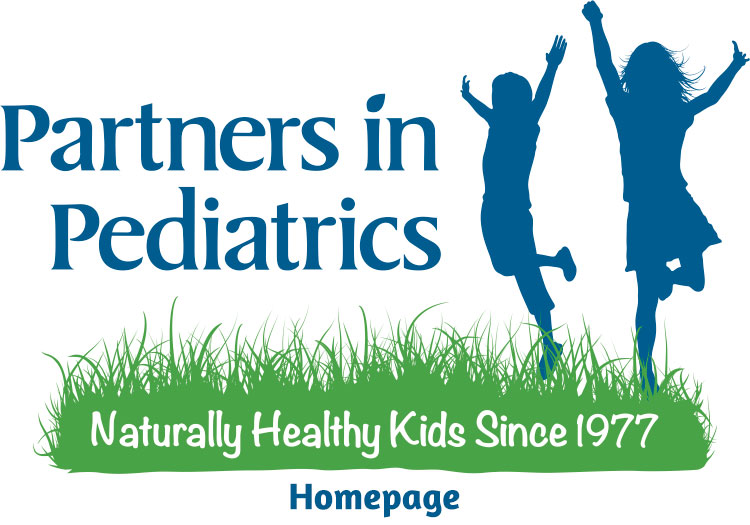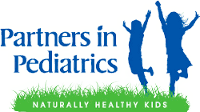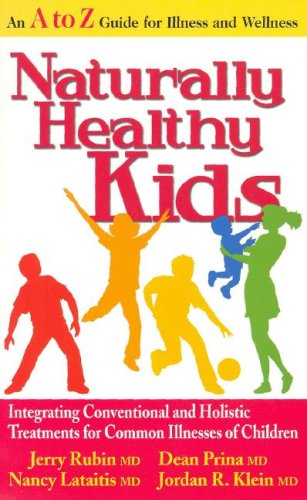It’s that time of year again – cold and flu season – and cases of the flu, RSV, and COVID are in full swing this year! To help you deal with this sometimes challenging time of year, we are taking (literally) a chapter from our Naturally Healthy Kids handbook, an invaluable resource we have developed for integrating conventional and holistic treatments for children’s common illnesses, that’s now available as an eBook on Amazon! When you have a question or concern, our handbook can provide a wonderful starting point for finding answers, although we are also always happy to meet with or talk with you personally. As your integrative pediatrician and Denver medical home, we are always looking for ways to improve your pediatric care experience!
Whether it be flu, bronchitis, pneumonia, COVID, or the common cold, there are some care aspects common to all respiratory illnesses, referred to in Naturally Healthy Kids as the “integrated management of respiratory illnesses.” These details of care are an important part of your child’s recovery from any respiratory illness and are an example of the type of integrative pediatric care that we provide!
Environment
It goes without saying that a sick child is generally an uncomfortable child. As a concerned parent, you want nothing more than to ease your child’s suffering and to make them as comfortable as possible. To start, think about your child’s environment!
- Keeping your sick child in the familiar surroundings of their own home and bedroom can only be helpful. The goal is to limit trips away from home to the absolute essentials, such as trips to the doctor or the pharmacy, and to limit activities, especially physical activities. A mildly ill child might enjoy a board game or reading, whereas a more miserable child might prefer distractions such as watching TV or videos or listening to music. Limit phone calls and visitors so your sick kiddos can really rest. And while they’re resting, consider silencing the phone and treating yourself, the weary caregiver, to a nap!
- A lukewarm bath can be comforting to an ill child, even one with a fever, particularly with the addition of essential oils of eucalyptus radiata and/or lavender. A gentle massage is another wonderful way to soothe and relax your child. You don’t need to know a specific massage technique–your loving, gentle touch is enough!
- Dress your sick child in layers to keep them from chilling or overheating. The goal is to keep your child comfortable enough to rest. To that end, you may want to dress a feverish child more lightly so the heat can more readily dissipate. Regardless of a fever, however, if your child is chilled, dress them more warmly. Consider a hat and socks or slippers, even indoors, as much heat can be lost through a child’s head and feet.
- Pay close attention to the air your sick child is breathing. There should be no exposure to cigarette or other smoke, paint or other vapors, or dust (from vacuuming, sanding wood, etc.), and exposure to known allergens, such as cat or dog dander, should be minimized or avoided. A good air purifier can remove 99% of pollutants, allergens, dust, animal dander and “germs” from the air, and can be especially helpful for children with chronic respiratory illnesses. Most department or hardware stores and pharmacies carry affordable room air purifiers with HEPA technology, which is an excellent method of purification.
- Humidification of the air is soothing and also promotes healing. Although steam vaporizers provide the cleanest source of humidification, they pose a risk of burning an unattended child. Cool-mist humidifiers pose no risk of causing burns, but remember to clean them at least once a week (according to the manufacturer’s specifications) to avoid mold buildup.
- Elevating your child’s head will help improve the natural drainage of mucous during a respiratory illness. Older children can be propped up on pillows or they can relax in a reclining chair. Infants and toddlers are often comfortable in their car seats, which can be placed in their crib or on the floor.
Pain Relief
Your sick child may complain of earache, headache, sore throat and general muscle aches, or their discomfort may manifest as restlessness, irritability or lethargy. Some children may be able to rest without the need for specific pain intervention, but others may be uncomfortable enough that they will need pain relief medication. In that case, acetaminophen and ibuprofen are the safest and most effective pain relievers, although ibuprofen is not recommended for infants less than 6 months old. (Be sure to follow the packaging’s dosing instructions carefully or contact us if you have any questions. Specific dosing recommendations are also set forth in our Naturally Healthy Kids handbook.) When your child has a sore throat, you can additionally give them throat lozenges, such as Original Ricola Herbal Cough Drops. Sipping herbal teas (such as Throat Coat Tea by Traditional Medicinals) can also soothe throat pain, as can over-the-counter (“OTC”) throat sprays, such as Chloraseptic or Sore Throat Spray by Herbs for Kids. (Again, accurately follow package directions for dosing.) If your child seems miraculously improved after taking pain-relieving medication, that should be an opportunity to encourage more rest, not more activity, no matter how much your child tries to persuade you otherwise! If the medications, and the other measures set forth in this blog, don’t adequately relieve your child’s pain and discomfort, please call us, your holistic pediatrician, to discuss further.
Sleep
If your child is too restless to sleep, in spite of the pain-relief methods listed above, valerian root (such as Herbs for Kids–Valerian Super Calm) can be a safe and effective method to deal with that problem. (Accurately follow the package guidelines for dosing.) Rescue Remedy may also be helpful if your child is agitated or restless–you may use 2 drops every 10 to 60 minutes to calm restlessness, as needed. If your child is still unable to sleep, your health care provider can suggest other options, and perhaps an office visit to examine your child.
Sick children generally sleep best in their own bed or with you in your bed. Lying down or sleeping with your child will rarely lead to habit formation and, even if it does, that short-lived habit can be dealt with relatively easily once your child is well. The only real risk of lying down with an ill child is the contagiousness to you. Only you can assess if you are willing to take that risk. The extra rest you may all get may be more valuable in the long run!
Runny Nose and Nasal Congestion
As you are well aware, most respiratory illnesses come with a runny nose and/or nasal congestion. Many OTC preparations for relief of those symptoms contain decongestants and/or antihistamines. Although they may offer minimal relief, they may also have some significant side effects. As a result, we strongly feel that ORAL antihistamines and decongestants should be avoided. If you feel some treatment is required, you may begin with salt water (saline) nasal irrigation. In small children, first clear the nostrils with a bulb syringe and then use nose drops made of 1/2 teaspoon of salt and 1 cup of water. You may also use OTC preparations such as Ocean, Nasal or a generic equivalent. Regardless of which you use, put 2 drops in each nostril and suction out the mucous. You can repeat, as needed, 3 to 4 times a day, but remember that nasal suctioning too frequently can cause the nasal membrane to swell and worsen the congestion.
If a child’s congestion or runny nose is bad enough to affect the ability to eat, sleep or rest comfortably, a nasal SPRAY decongestant (such as Neosynephrine or Afrin) may be used. (For dosing, follow the package guideline accurately.) Be aware that these medications run the risk of causing a “rebound” effect (where, once the medication wears off, the symptoms return to a level of severity worse than the original symptoms) if used for a prolonged period. A “rebound” effect generally won’t occur if the product is used only 2 to 3 times per day for less than 5 days.
You may also find it useful to use a homeopathic nose spray remedy (such as Reboost Cold & Flu spray), which can be given in a dose of 1 spray in each nostril, 2 to 3 times daily. (This remedy is also available as an oral remedy, which may be given 2 to 3 times daily.) If used in conjunction with an OTC nasal spray decongestant, they should be given at least 1 hour apart.
Cough
As you probably know from personal experience, cough is one of the most disruptive and uncomfortable symptoms of a respiratory illness. As a result, in Naturally Healthy Kids, we have devoted an entire chapter to the management of coughs. We also have a blog dedicated entirely to the management of coughs – it’s loaded with great info, so be sure to check it out.
Diet
Sick children generally lose their appetites, and you should follow their lead carefully. If they aren’t hungry, don’t try to force them to eat and especially don’t offer them junk food to bribe them to eat. If your ill child is hungry, offer simple foods, preferably well-cooked, such as cooked grains (rice, oatmeal and pasta) and cooked vegetables or fruit (such as canned peaches). Remember, it is more important by far that an ill child drink plenty of fluids than eat solid foods. And don’t forget about chicken soup – there is some evidence it may be helpful after all in relieving symptoms of cold and flu (Grandma was right!).
Supplements
- Vitamin C— The use of Vitamin C to prevent respiratory infections and minimize respiratory symptoms is still controversial, with some children clearly benefiting and others not. We do recommend the use of Vitamin C in the following doses during a cold: 12 months to 2 years– 100 mg 3-4 times daily; 2 years to 5 years– 250 mg 3-4 times daily; 5 years to 10 years– 500 mg 3-4 times daily; and 10 years and up– 1,000 mg 3-4 times daily.
- Zinc— Zinc supports the functioning of the immune system and also enhances the body’s ability to fend off respiratory infections. Zinc comes in a variety of products, including a homeopathic form, and is safe for children when used in strict accordance with the dosing and administration guidelines on the package. For children 6 months or older, zinc also comes in the form of a lollypop or sucker, which again should be used in accordance with the dosing guidelines on the package. (If there are no package guidelines, you may safely use the following guidelines for a maximum daily dose of zinc: 6 to 12 months–6 mg; 1 to 2 years–10 mg; 3 to 12 years–10 mg; and 12 years and up–15 mg.) Zinc should be taken as early in the illness as possible and then continued for 2-5 days. Zinc supplementation should not be used longer than 7 days as it can lose its effectiveness and there is a greater chance of intolerance with prolonged use.
- Vitamin A— Vitamin A may be given once a day for 1 to 2 weeks using the following dosing guidelines: 1 to 3 years–2,000 IU; 4 to 6 years– 2,500 IU; 7 to 10 years– 3,500 IU; and 11 years and up– 4,000 IU. Vitamin A is important to use to support children with respiratory illnesses, especially infections.
- Echinacea/astragalus— This combination herbal remedy, which is available in many forms (tea, capsules and tinctures), may enhance the immune system’s response to a developing infection. As a result, it should be given as early in the illness as possible and is most effective if given in the tincture form. It may be given 3 to 5 times a day for the first 2 to 3 days and then 2 to 3 times a day for 1 to 2 days more. Echinacea/astragalus stimulates the immune system and should NOT be used in diseases where the immune system is already overactive, such as asthma and eczema. If your child develops a rash, wheezing, or other allergic symptoms while taking this remedy, you should discontinue its use and contact your health care provider for advice.
As your pediatric health care provider in the Denver metro area, we are dedicated to providing your family with exceptional care using an integrative and holistic approach and combining conventional medicine and complementary and alternative remedies. After reading this blog, we hope that you feel much more prepared to deal with whatever the cold and flu season in Colorado may send your way. We are always happy to help in whatever way we can, so feel free to contact us!







Leave a Reply